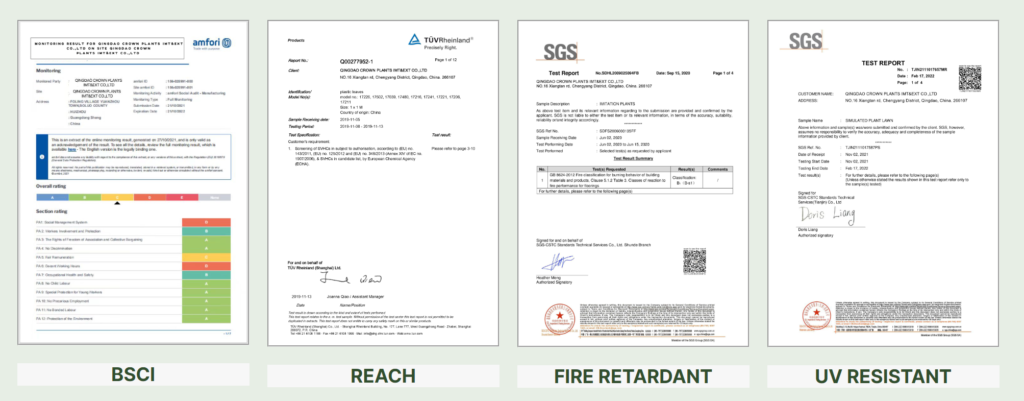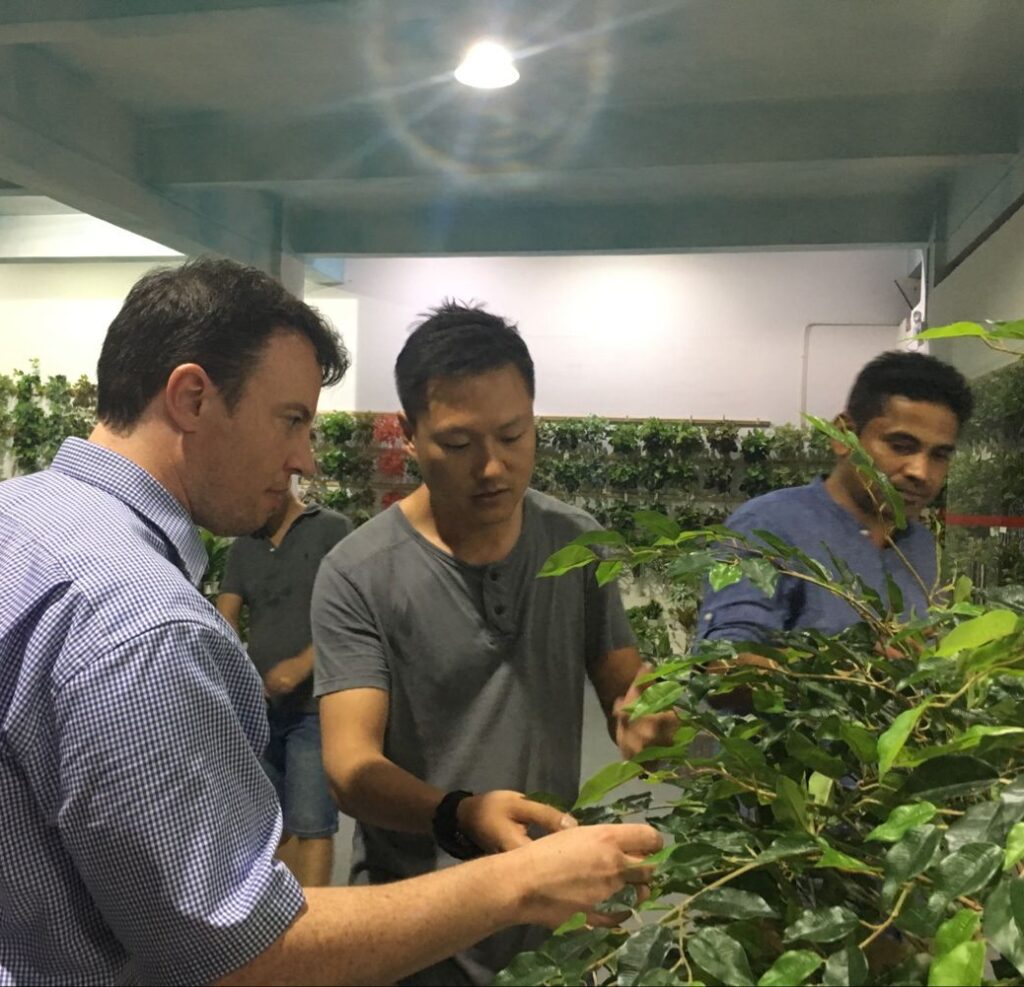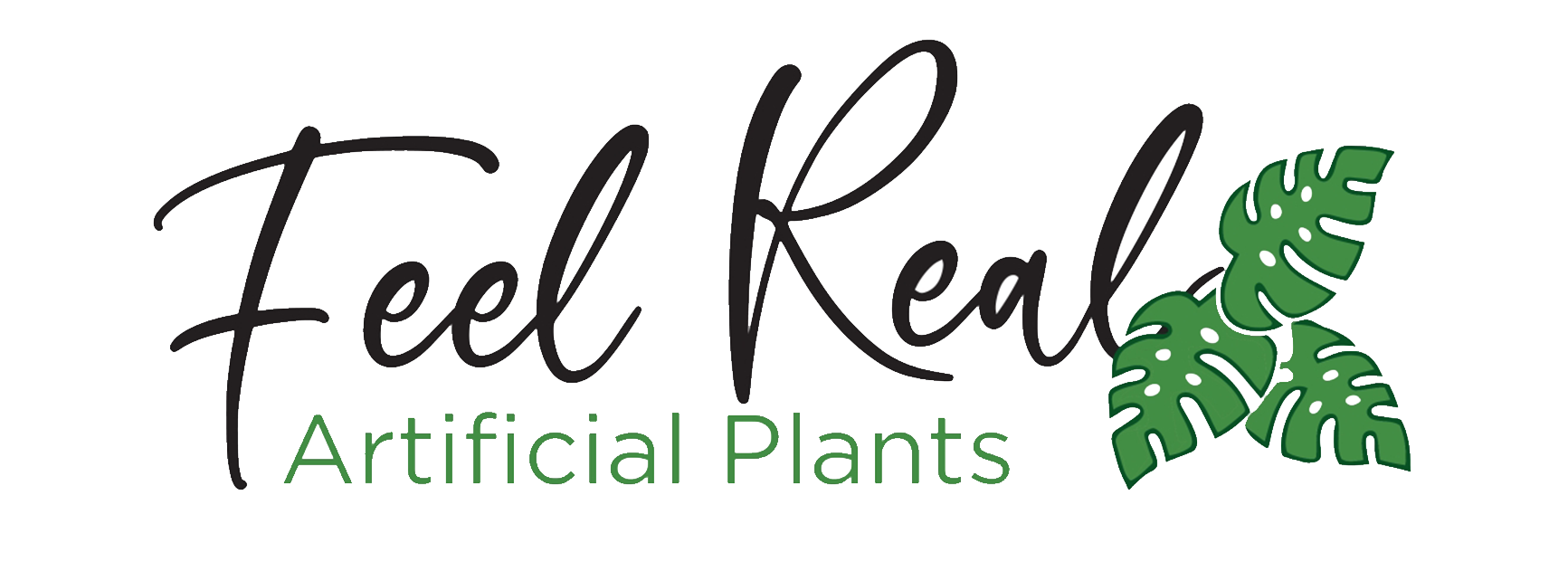In the global marketplace, finding reliable suppliers for wholesale artificial plants can be a daunting task, especially when sourcing from China. As an artificial plants factory based in China, we understand the importance of transparency, reliability, and credibility in the eyes of our customers. In this comprehensive guide, we’ll delve into the essential steps to help you evaluate the reputation and credibility of Chinese suppliers for wholesale artificial plants, empowering you to make informed decisions and foster successful partnerships.

1. Research and Background Check:
Research and background checks are the cornerstone of assessing the reliability and reputation of Chinese suppliers of wholesale artificial plants. Thorough due diligence empowers you to make informed decisions and select suppliers that align with your business requirements and standards. Here’s a closer look at how to conduct effective research and background checks:
Start by leveraging online resources to gather information about potential suppliers. Explore company websites, industry directories, and online marketplaces to learn about their product offerings, manufacturing capabilities, and customer base. Pay attention to the supplier’s website design, content quality, and overall professionalism, as these factors can reflect their commitment to transparency and credibility.
Evaluate the supplier’s track record and credentials to assess their reliability and credibility. Look for evidence of past successes, awards, certifications, and accolades that demonstrate their commitment to quality and professionalism.
2. Verify Company Registration and Certifications:
Verifying the company’s registration status and certifications is a critical step in assessing the legitimacy and credibility of Chinese suppliers of wholesale artificial plants. By confirming the supplier’s compliance with regulatory requirements and industry standards, you can minimize the risk of engaging with unreliable or unqualified suppliers. Here’s how to effectively verify company registration and certifications:
Official Government Databases: Utilize official government databases and online portals to verify the company’s registration status and legitimacy. In China, you can access the National Enterprise Credit Information Publicity System or the Administration for Industry and Commerce website to check the company’s registration details, including its legal status, business scope, and registered capital. Verify that the company’s registration information matches the details provided by the supplier and ensure that there are no discrepancies or irregularities.

Industry Regulatory Bodies: Consult industry regulatory bodies and trade associations to confirm the supplier’s compliance with relevant regulations and standards. Many industries have specific regulatory requirements governing product quality, safety, and manufacturing practices. Check if the supplier holds certifications or accreditations from reputable organizations such as the International Organization for Standardization (ISO), China Compulsory Certification (CCC), or other industry-specific certifications related to artificial plant manufacturing. These certifications serve as indicators of the supplier’s commitment to quality, consistency, and adherence to international standards.
ISO Certification: Verify whether the supplier has obtained ISO certification, which signifies compliance with internationally recognized standards for quality management systems. ISO 9001 certification, in particular, demonstrates the supplier’s commitment to maintaining high-quality processes and procedures throughout the manufacturing process. Confirm the validity and scope of the ISO certification and ensure that it covers relevant aspects of artificial plant production, such as design, manufacturing, and quality control.
Product Quality Certifications: Check if the supplier holds product quality certifications specific to artificial plants, such as ASTM International standards or European Union CE marking. These certifications validate that the products meet specified quality and safety requirements and comply with applicable regulations in target markets. Verify the authenticity of product quality certifications and ensure that they are issued by accredited certification bodies recognized in your industry.
Compliance with International Standards: Ensure that the supplier complies with relevant international standards and regulations governing artificial plant manufacturing and export. Verify compliance with standards such as REACH (Registration, Evaluation, Authorization, and Restriction of Chemicals), RoHS (Restriction of Hazardous Substances) to ensure product safety and environmental responsibility. Confirm that the supplier adheres to ethical and sustainable practices throughout the supply chain and demonstrates a commitment to social responsibility and corporate citizenship.
3. Assess Production Facilities and Capacity:
Assessing production facilities and capacity is a crucial step in evaluating Chinese suppliers of wholesale artificial plants.

Request Information and Documentation: Start by requesting detailed information and documentation from the supplier regarding their production facilities, equipment, and production capacity. Ask for photographs, floor plans, and specifications of the manufacturing facilities to understand their layout and infrastructure. Inquire about the types of machinery, tools, and technologies used in the production process, as well as any specialized equipment or facilities for artificial plant manufacturing.
Evaluate Manufacturing Capabilities: Assess the supplier’s manufacturing capabilities, including their ability to produce artificial plants in various styles, sizes, and quantities. Consider factors such as production lead times, flexibility, and scalability to accommodate fluctuations in demand and seasonal variations. Evaluate the supplier’s expertise in handling different materials, such as plastic, fabric, or silk, and their proficiency in replicating lifelike foliage and textures.
Quality Control Processes: Inquire about the supplier’s quality control processes and procedures to ensure consistency and adherence to quality standards. Ask about the methods used for inspecting raw materials, monitoring production processes, and conducting final product inspections. Assess the supplier’s commitment to quality assurance, defect prevention, and continuous improvement initiatives to mitigate the risk of product defects or discrepancies.
On-Site Visits and Inspections: Consider visiting the supplier’s facilities in person or arranging for third-party inspections to verify their production capabilities firsthand. Conducting on-site visits allows you to assess the condition of the facilities, observe production processes, and interact with key personnel. Look for signs of cleanliness, organization, and efficiency in the production environment, as well as evidence of adherence to safety protocols and regulatory requirements.
4. Review Product Samples and Quality Standards:
Reviewing product samples and quality standards is an essential part of evaluating Chinese suppliers of wholesale artificial plants.
Request Samples: Begin by requesting samples of the artificial plants offered by the supplier. Ask for a variety of samples representing different styles, sizes, and materials to evaluate the breadth of their product range. Request samples that match your specific requirements and preferences, such as foliage types, colors, and pot sizes. Ensure that the samples provided are representative of the supplier’s standard production quality.
Assess Quality and Craftsmanship: Carefully examine the samples to assess their quality, craftsmanship, and attention to detail. Evaluate the materials used in construction, such as plastic, fabric, or silk, and assess their durability and resilience. Inspect the overall appearance of the artificial plants, including the accuracy of foliage replication, color consistency, and texture realism. Look for the details of precision in craftsmanship, such as neatness in assembly, secure attachment of components, and absence of defects or imperfections.

Verify Lifelike Appearance: Evaluate the lifelike appearance of the artificial plants to ensure they meet your aesthetic standards and specifications. Assess the realism of the foliage, including the texture, color variations, and natural-looking arrangement. Consider factors such as leaf shape, vein patterns, and branch structure to determine the authenticity of the artificial plants. Verify that the products convey a lifelike appearance that resonates with your target customers and enhances their visual appeal.
Discuss Quality Assurance Measures: Engage in discussions with the supplier regarding their quality assurance measures and procedures for ensuring product consistency and reliability. Inquire about their quality control processes, including inspections, testing, and verification methods employed during production. Discuss how the supplier addresses product defects or discrepancies, such as returns, replacements, or refunds, to ensure timely resolution of quality issues.
Clarify Specifications and Standards: Clarify your specifications and quality standards with the supplier to ensure alignment with your expectations. Provide detailed feedback on the samples reviewed, highlighting areas of satisfaction and areas for improvement. Discuss any modifications or customizations required to meet your specific requirements and preferences. Establish clear communication channels for ongoing collaboration and feedback throughout the procurement process.
5. OEM Service and Customization Options:
In today’s competitive market, offering customized products tailored to the specific preferences and requirements of your customers can set your business apart from the competition. That’s why selecting a supplier that provides OEM (Original Equipment Manufacturer) services is essential for maximizing your ability to meet diverse customer needs and preferences.
Tailored Designs: Work closely with the supplier to develop bespoke designs that reflect your brand’s aesthetic and resonate with your target audience. Customize aspects such as foliage arrangements, pot designs, and overall aesthetics to create unique and distinctive artificial plants that stand out in the market.
Custom Colors: Personalize the color palette of your artificial plants to match specific customer preferences or complement existing product lines. Choose from a variety of hues, tones, and finishes to create visually appealing arrangements that suit different décor styles and preferences.
Branding Opportunities: Incorporate your brand logo, name, or other branding elements into the design of the artificial plants to enhance brand visibility and recognition. Custom branding options allow you to reinforce brand loyalty and create a cohesive brand experience across your product range.
Packaging Customization: Customize packaging options to align with your brand image and enhance the presentation of your products. Choose from various packaging materials, styles, and designs to create a cohesive and visually appealing packaging solution that enhances the perceived value of your artificial plants.
6. Secure Payment Methods:
Exclusive Product Offerings: With OEM services, you have the opportunity to create exclusive product offerings that are unique to your brand and not available from competitors. This exclusivity can help attract and retain customers, drive sales, and build brand loyalty over time.
Securing payment methods is paramount to safeguarding your financial interests when engaging with Chinese suppliers of wholesale artificial plants. Implementing secure payment practices mitigates the risk of financial loss and ensures a smooth and reliable transaction process.
Avoid Large Upfront Payments: Minimize the risk of financial loss by avoiding large upfront payments to suppliers. Instead, negotiate payment terms that allow for staggered payments based on milestone achievements or product delivery milestones. By spreading payments over time, you can mitigate the risk of non-delivery or quality issues while maintaining control over your financial resources.

Use Secure Payment Channels: Conduct transactions through secure payment channels to protect sensitive financial information and prevent unauthorized access. Avoid using unsecured methods such as cash payments or wire transfers without proper documentation or verification. Opt for secure payment methods such as bank transfers, credit cards, or online payment platforms that offer encryption and fraud protection features.
Negotiate Payment Terms: Negotiate payment terms that offer a balance of security and flexibility for both parties. Discuss payment schedules, milestone payments, and acceptable payment methods to establish clear expectations and minimize disputes. Consider factors such as production lead times, order volumes, and cash flow constraints when determining payment terms that meet your needs and preferences.
Partial Payments Upon Order Confirmation: Secure your financial interests by making partial payments upon order confirmation, rather than committing to full payment upfront. This approach allows you to demonstrate your commitment to the supplier while retaining leverage until production commences. Specify the percentage of the total order value to be paid upfront and establish clear payment milestones based on production progress.
Payment Upon Product Delivery or Inspection: Protect your investment by arranging for final payments to be made upon product delivery or satisfactory inspection. Insist on the right to inspect the goods upon receipt and withhold final payment until you are satisfied with the quality, quantity, and condition of the products. This ensures that you only pay for products that meet your specifications and standards, minimizing the risk of disputes or disagreements.
7. Conduct Factory Visit and Inspection:
Conducting a factory visit and inspection is an invaluable step in evaluating Chinese suppliers of wholesale artificial plants.
Gain Insight into Manufacturing Processes: Visiting the supplier’s factory allows you to observe their manufacturing processes from start to finish. You can see firsthand how artificial plants are fabricated, assembled, and packaged. By understanding their production methods and workflows, you can assess the efficiency, consistency, and quality of their operations.
Evaluate Quality Control Measures: During the factory visit, pay close attention to the supplier’s quality control measures and procedures. Observe how they inspect raw materials, monitor production lines, and conduct final product inspections. Assess the rigor of their quality assurance protocols and their commitment to delivering products that meet your specifications and standards.
Assess Working Conditions: Take note of the working conditions and environment within the factory. Observe the cleanliness, organization, and safety practices in place. A visit to the factory allows you to ensure that ethical and responsible practices are upheld throughout the production process.
Evaluate Production Capacity: Assess the supplier’s production capacity, equipment, and workforce to determine their ability to fulfill your orders efficiently and reliably. Observe the size and scale of the production facility, the types of machinery and technology utilized, and the number of workers employed. Assess whether they have the resources and capabilities to meet your volume requirements and delivery timelines.

Build Trust and Rapport: A factory visit provides an opportunity to establish a personal connection with the supplier and build trust and rapport. Face-to-face interactions allow you to communicate your expectations, address any concerns, and clarify details directly with the supplier’s management team. Building a strong relationship based on mutual trust and understanding is essential for fostering a successful and long-lasting partnership.
8. References and Recommendations:
Supplement your research with online reviews and testimonials from other clients who have worked with the Chinese suppliers you’re evaluating. Browse business directories, review platforms, and supplier websites to read feedback from past customers.
Pay attention to recurring themes, both positive and negative, to gain a balanced perspective on the supplier’s reputation and performance. While online reviews should be considered alongside other sources of information, they can provide additional insights into the supplier’s track record and customer satisfaction levels.
In conclusion, evaluating the reputation and credibility of Chinese suppliers for wholesale artificial plants requires diligence, research, and collaboration. By following these guidelines and best practices, you can mitigate risks and build strong, mutually beneficial relationships with reliable suppliers. Remember, investing time and effort upfront to assess suppliers’ credentials can lead to long-term success and customer satisfaction. Choose wisely, and partner with suppliers who share your commitment to quality, innovation, and customer service.


